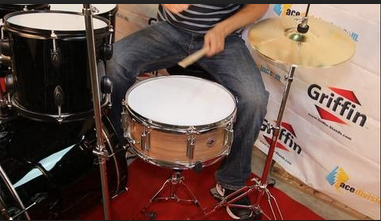SPOILER ALERT!
Picking the Proper Snare Drum
As you put your drum kit together, you will surely wish to put in a snare drum into your mix. Also referred to as a negative drum, this flexible instrument delivers a wide range of sounds. From the standard wire-enhanced snare sound, to the time-honored border shot. Let us take a peek at this integral instrument and how various factors influence its sound and endurance. Our goal is to help you select the right snare drum to your own style.

Pick the Size to the Sound You Want
The thickness of the drum impacts the depth of the sound. All are 5 to 6 inches deep, although some go as deep as 8 inches, with a corresponding thickness of sound. Conventional snare drums are 5 inches deep using a 14 inch diameter, and are the mainstay size for jazz, country, and rock drummers. All these are showcased on the kits of these playing metal/heavy metal and funk.
Likewise for diameter. A smaller diameter drum will get a higher pitch than a larger diameter head. Again, it is something you need to hear for yourself to see whether it's a sound that you desire. The combination of shell diameter and thickness makes its own sonic footprint.
Deep snares are sometimes used as alternatives on stone kits, or on bass and drum set ups. Piccolo snare drums are typically only 3 inches deep with a 13 inch diameter, and that keeps the sound crisper with a high pitch. Piccolos tend to be prominent on the kits of drummers playing pop, reggae, jazz and hip-hop. A lighter, brighter sound is accomplished, and the piccolo is often utilized as a second or alternative snare on the kit.
What It Is Constructed of Determines What it is Made For
Snare drums create various sounds based on the materials they're composed of. Jazz snare drums are typically made of brass or wood, with walnut being the overriding material. This also gives the drum a rich, deep sound. Rockers like snare drums made of stainless steel which different and louder sound makes it noticed against electrical guitar riffs. Metal drummers and punk rockers such as a snare drum which produces a whole lot of noise at higher pitch. And it must manage some pretty heavy action. Their snare drums usually include materials such as bronze, aluminum, brass, or synthetics such as carbon dioxide or acrylic.
The Difference the Head Makes
The drumhead the drummer strikes will greatly affect the sound. Funk drummers like a tightly tuned head made of durable material that will deliver instant, full-bodied sound. Those favoring punk appear to favor a tighter setup that produces crisper action and sound. Jazz drummers usually groom their snares using a textured drumhead that enhances the nuanced, muted noise they want. And rockers need a slightly muffled sound rippling through a thick drumhead. For these, the right drum head provides the trap more"thump" and not as"crack"
More tightly tuned heads will establish less durable, regardless of material. But the distinction is not so great that you should let it affect your own set up. Tune the mind to your own style, and let it rip. Most heads will provide you a good return on your investment.
Conclusion
As you put your set together, or select a snare drum for an existing set, think about your needs and style. Then select the best snare drum which will deliver the sound you are looking for.
For more details please visit snare drum.
